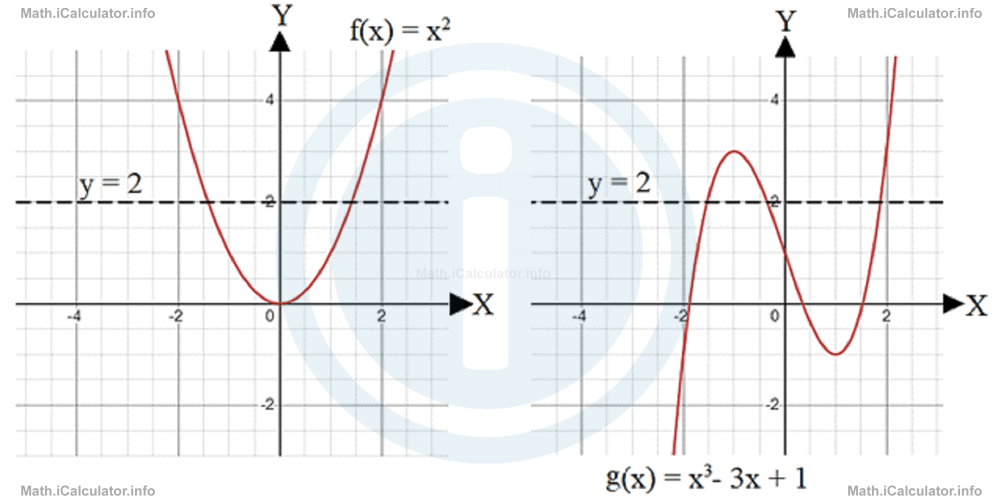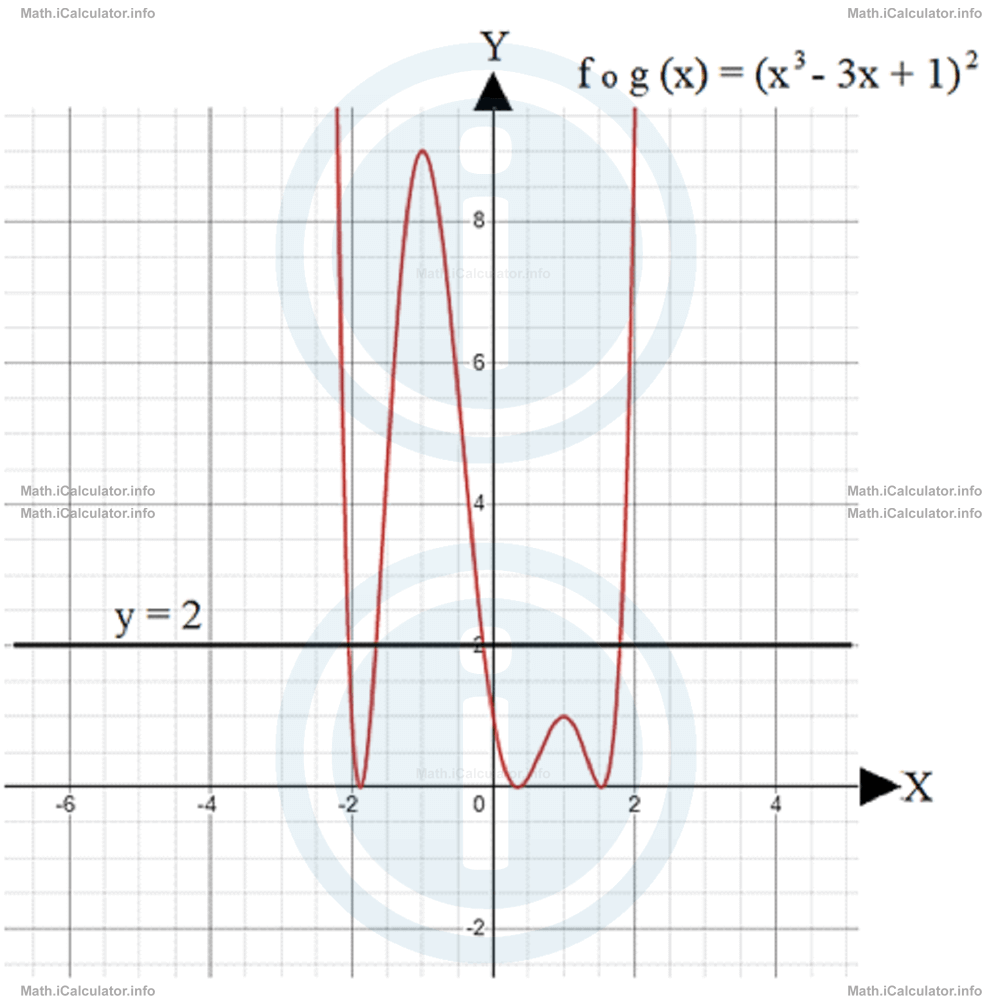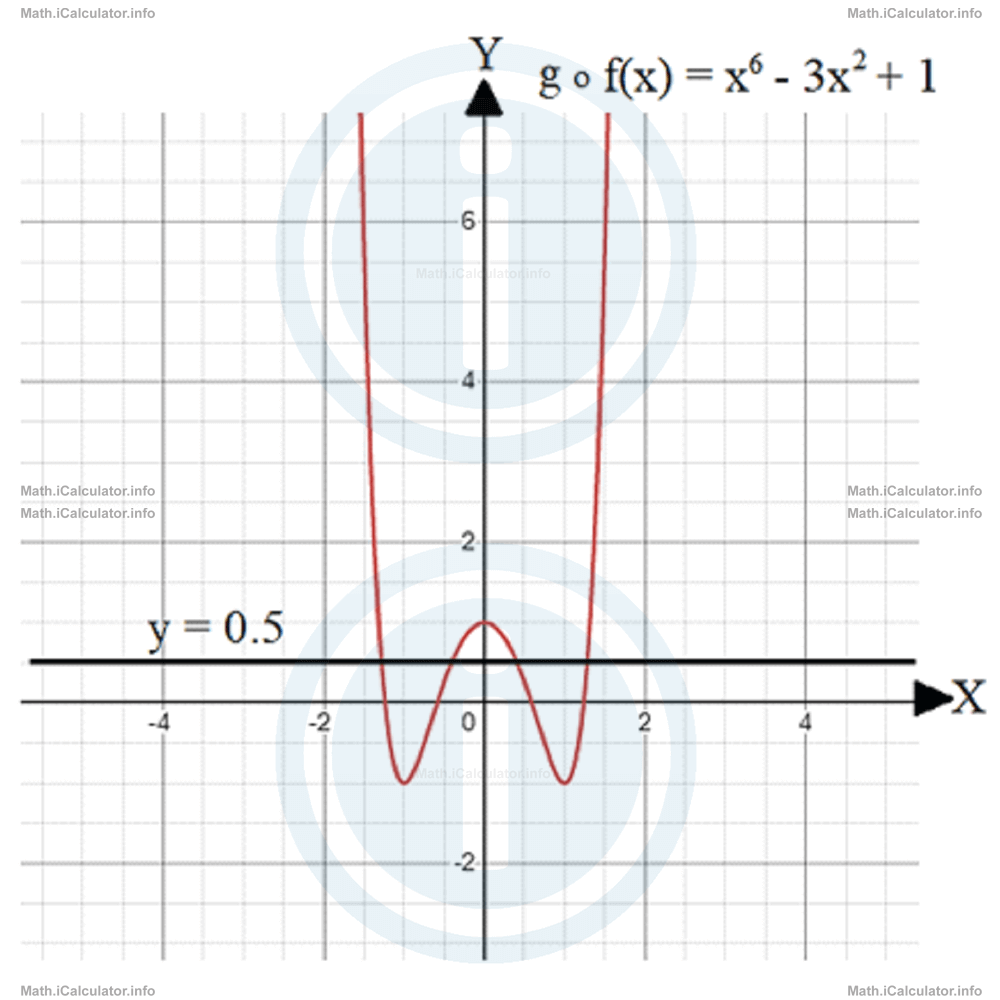Menu
Math Lesson 16.4.2 - Properties of Composite Functions
Please provide a rating, it takes seconds and helps us to keep this resource free for all to use
Welcome to our Math lesson on Properties of Composite Functions, this is the second lesson of our suite of math lessons covering the topic of Composite Functions, you can find links to the other lessons within this tutorial and access additional Math learning resources below this lesson.
Properties of Composite Functions
From the above example, it is clear that composite functions have the following properties:
- For any function f(x)f(c · x) ≠ c ∙ f(x)where c is a constant.
For example, if f(x) = 2x + 1 and c = 3, thenf(c · x) = f(3x)On the other hand,
= 2 ∙ 3x + 1
= 6x + 1c ∙ f(x) = 3 ∙ (2x + 1)
= 6x - 3 - If f(x) and g(x) are functions, then in general f ∘ g(x) ≠ g ∘ f(x)We have explained this property through examples earlier in this tutorial. Thus, in general, the composition of functions is not commutative.
- Composite functions are associative in the sense that if we have three functions f(x), g(x) and h(x), then f ∘ (g ∘ h) = (f ∘ g) ∘ hFor example, if f(x) = 2x, g(x) = xx and h(x) = 3/4x, then for f ◦ (g ◦ h) we begin with g ◦ h, where the entire function h(x) is inserted in the place of x in the function g(x), i.e.g ∘ h = g[h(x)]Then, we insert the function f(x) in the place of x in the above function to find f ◦ (g ◦ h).
= (3/4x)2
= 9/16x2f ∘ (g ∘ h) = f(g ∘ h)As for (f ◦ g) ◦ h we begin with f ◦ g by inserting the entire function g(x) in the place of x in the function f(x), i.e.
= 2 ∙ 9/16x2
= 18/16x2
= 9/8x2f ∘ g = f[g(x)]Then, we find (f ◦ g) ◦ h, by inserting the entire function h(x) in the place of x in the above function, i.e.
= 2 ⋅ (x2 )
= 2x2(f ∘ g) ∘ h = 2 ⋅ (3/4x)2As you see, the composite functions obtained are the same in both cases. Hence, all the associative property of composite functions is true.
= 2 ⋅ 9/16x2
= 18/16x2
= 9/8x2 - If f(x) and g(x) are inverse functions in the sense that f(x) = g-1(x), then f ∘ [g(x)] = g ∘ [f(x)] = xnwhere n is an integer.
Like in numbers, two functions are inverse if their product a coefficient equal to 1 followed by a power of x. For example, f(x) = x/2 is the inverse of g(x) = 2x becausef(x) ∙ g(x) = x/2 ∙ 2xNow, let's check whether the fourth property of composite functions is true. Thus,
= 2x2/2
= x2f ∘ [g(x)] = 2x/2On the other hand,
= xg ∘ [f(x)] = 2 ∙ x/2As you see, the results are the same, so the fourth property of composite functions is true.
= 2x/2
= x - The composition of one-to-one (injective) functions is also one-to-one (injective).
For example, both functions f(x) = x - 1 and g(x) = 3x are one to one, as every value of the domain (input) has in correspondence a single value in the range (output). This is true for the two resulting combined functions as well. For f ◦ g (x) we havef ∘ g(x) = f[g(x)]It is clear that this is an injective (one-to-one) function, as for every x-value there is a single f(x) value in correspondence.
= f(3x)
= 3x - 1
Likewise, for g ◦ f (x) we haveg ∘ f(x) = g[f(x)]This is also an injective function, as for every x-value there is a single g(x) value in correspondence.
= g(x - 1)
= 3 ⋅ (x - 1)
= 3x - 3 - The composition of surjective (onto) functions is also surjective (onto).
We have given the definition of surjective functions in tutorial 16.2. Thus, a function is surjective when all the output values have in correspondence at least one input value. For example, f(x) = xx and g(x) = x3 - 3x + 1 are both surjective, as the horizontal line test gives more than one intercept for both functions, as shown below. Now, let's check whether the composite functions f ◦ g (x) and g ◦ f (x) are also surjective or not. We have f ∘ g(x) = f(x3-3x + 1)The horizontal line test for this function gives more than one intercept with the graph, so the composite function f ᵒ g (x) is also surjective, as shown in the figure below.
Now, let's check whether the composite functions f ◦ g (x) and g ◦ f (x) are also surjective or not. We have f ∘ g(x) = f(x3-3x + 1)The horizontal line test for this function gives more than one intercept with the graph, so the composite function f ᵒ g (x) is also surjective, as shown in the figure below.
= (x3-3x + 1)2 As for g ◦ f (x), we have g ∘ f(x) = g(x2)This function is also sujective, as the horizontal line test gives more than one intercept, as shown in the figure below.
As for g ◦ f (x), we have g ∘ f(x) = g(x2)This function is also sujective, as the horizontal line test gives more than one intercept, as shown in the figure below.
= (x2)3 - 3 ∙ (x2) + 1
= x6 - 3x2 + 1
- If f ◦ g(x) = g ◦ f(x), then f(x) = g(x).
This is obvious, since in general f ◦ g(x) ≠ g ◦ f(x) as explained earlier. The only case when these two composite functions are equal is when the two individual functions are equal. For example, if f(x) = xx - 2x + 1 and g(x) = (x - 1)2, thenf ∘ g(x) = f[g(x)]On the other hand,
= [(x - 1)2]2 - 2 ∙ (x-1)2 + 1
= (x2 - 2x + 1)2 - 2(x2 - 2x + 1) + 1
= x4 - 2 ∙ (2x + 1) ⋅ 1 + 12 - 2x2 + 4x - 2 + 1
= x4 - 4x - 2 + 1 - 2x2 + 4x - 2 + 1
= x4 - 2g ∘ f(x) = g[f(x)]As you see, we obtained the same function in both compositions.
= [(x2 - 2x + 1) - 1]2
= (x2 - 2x + 1)2-2(x2 - 2x + 1) ∙ 1 + 12
= x4 - 2 ∙ (2x + 1) ∙ 1 + 12 - 2x2 + 4x - 2 + 1
= x4 - 4x - 2 + 1 - 2x2 + 4x - 2 + 1
= x4 - 2
You have reached the end of Math lesson 16.4.2 Properties of Composite Functions. There are 9 lessons in this physics tutorial covering Composite Functions, you can access all the lessons from this tutorial below.
More Composite Functions Lessons and Learning Resources
Whats next?
Enjoy the "Properties of Composite Functions" math lesson? People who liked the "Composite Functions lesson found the following resources useful:
- Properties Feedback. Helps other - Leave a rating for this properties (see below)
- Functions Math tutorial: Composite Functions. Read the Composite Functions math tutorial and build your math knowledge of Functions
- Functions Revision Notes: Composite Functions. Print the notes so you can revise the key points covered in the math tutorial for Composite Functions
- Functions Practice Questions: Composite Functions. Test and improve your knowledge of Composite Functions with example questins and answers
- Check your calculations for Functions questions with our excellent Functions calculators which contain full equations and calculations clearly displayed line by line. See the Functions Calculators by iCalculator™ below.
- Continuing learning functions - read our next math tutorial: Piecewise Functions
Help others Learning Math just like you
Please provide a rating, it takes seconds and helps us to keep this resource free for all to use
We hope you found this Math tutorial "Composite Functions" useful. If you did it would be great if you could spare the time to rate this math tutorial (simply click on the number of stars that match your assessment of this math learning aide) and/or share on social media, this helps us identify popular tutorials and calculators and expand our free learning resources to support our users around the world have free access to expand their knowledge of math and other disciplines.